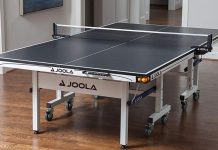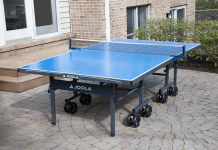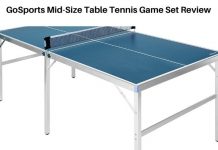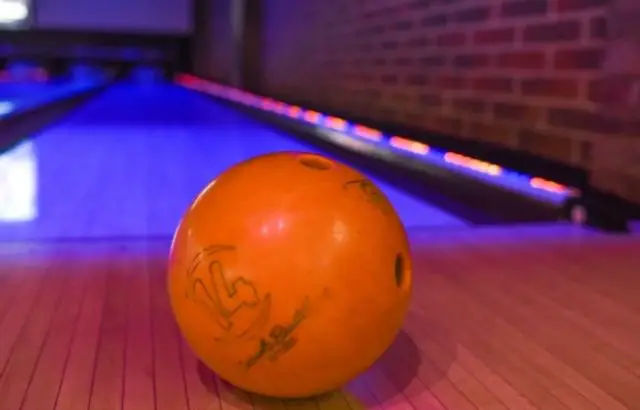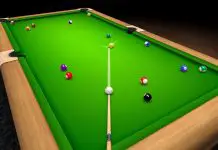A 13-pound bowling ball is a great choice! A good bowling ball alone does not win games. But a bad ball can indeed upset us and ruin our game. Especially if it does not respond to our style of play or our strength. That is why it is so important to choose a product that is made with quality materials. That offers us the right weight and distribution at all times. So, let’s see is a 13-pound bowling ball too light to use or not.
For example, sometimes we can find products like the Columbia 300 weighted bowling ball. It has a polyester exterior and a crepe-type construction that generates a straight effect when hitting. Another interesting model is the Brunswick TZone bowling ball. In this case, the product has a nominal weight of 11 pounds and an interior design that makes it suitable for beginners and those who already have some playing experience, both men and women.
Table of Contents
Weight of the Ball
The weight of a bowling ball is significant. When we see a comparison of bowling balls, the first aspect that is used to classify them is the weight of the ball. This is just not making a 13 lb vs 14 lb bowling ball comparison. We need to go further. The bowling ball weight is directly related to the sex and age of the player in the foreground. In the second case, there is room for the player’s personal preferences when choosing the weight. That applies with a 13 pound bowling ball too.
It is also good to know that, as an excellent American sport, bowling balls measure their weight in pounds. Not kilograms. So let’s start by talking about balls that weigh between 6 and 8 pounds, designed for the little ones in the house. Look at how much does a bowling ball weighs too to have more info.
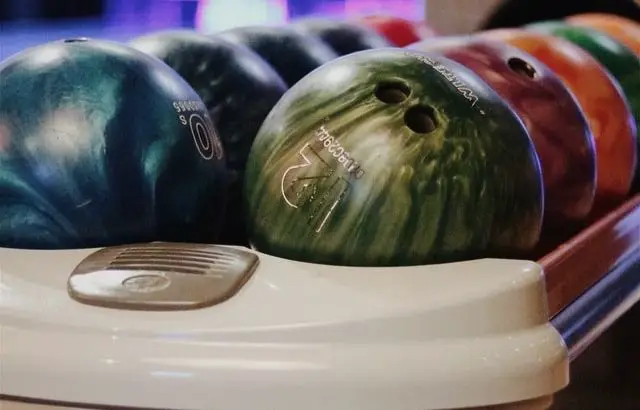
Bowling Ball Weight vs Speed
Lightweight balls that make it easier for them to manoeuvre and perform their first plenary sessions. Remember: You should ask yourself: what weight bowling ball should I use. Depending on their age, you can even think of a 9 or 10-weighted bowling balls, if you have the strength to do so.
In the case of women, balls usually weigh around 10 or 12 pounds, which is recommended to start playing. In the case of men, the benchmark would be 12 pounds. Although players who prefer strength control can also throw for 10-pound models.
These players have balls of up to 15 or 16 pounds, being the heaviest ones offered by the market. Still, the advice is not to be overweight unless you can play comfortably with that load for at least five or six full games. On the other hand, you can use a bowling ball weight calculator. That will help you to know more about your choices.
Finger Distribution
Another essential aspect when choosing a bowling ball is the distribution of the fingers on it. This is especially important for players who already have a little more experience. They are indeed interested in finding a good, affordable bowling ball that offers a more personalized game.
This brings us to the question of checking whether the bullet is pricked or not. As a first step before making our purchase. The fact is that many manufacturers sell the logs raw and undrilled, so it is the user himself who makes these holes later.
Something that allows you to properly adjust the size and distribution of the fingers to what suits you best according to personal preferences or the most common grips that exist.
Anyway, this aspect is aimed at more advanced users. So newcomers looking for economic bowling balls will prefer a pre-drilled model.
These pre-drilled balls generally reproduce the most common grips, either to go into the second joint and reach the depth or for the first phalanx to gain lift and spin or an intermediate position. It’s all about testing and seeing what works for us.

How to Find the Ideal Ball Speed for Different Oil Conditions
If a lane has a broad application of oil in front of it, a bowler who throws a ball at 21 mph when the ball touches the lane surface will find a maximum slip and maintain more speed on his way to the lane. Bowling than a ball thrown at the same speed on a dry lane where friction significantly slows the ball down.
Oil conditions can cause the speed of the ball to vary upon impact with two mph pins, given the right circumstances. This fact is one of the reasons. Why professional bowling instructors require students to deliver the ball with a faster release rate in the dry parts of the lanes to compensate for the high surface friction.
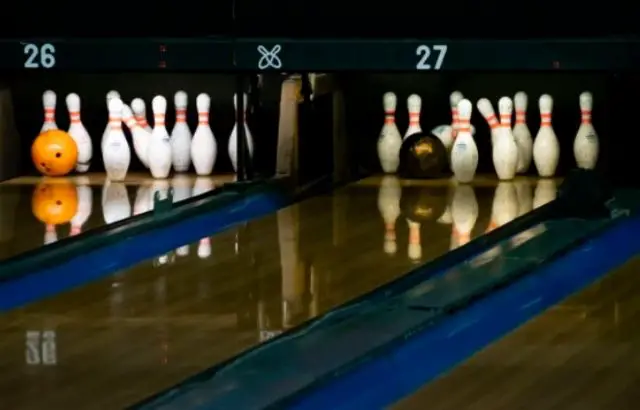
Does your bowling ball coverage affect the speed of the ball?
No. A strong roof material, such as a low-grain textured surface. Like that prepared with a 500-grain abrasion pad, will slow down faster than a polished and prepared pearlized reactive cover material with an abrasion pad, like a 4000 grain, and when delivered in the same lane condition by the same bowler and with the same starting ball speed and throwing angle. Friction slows the ball down.
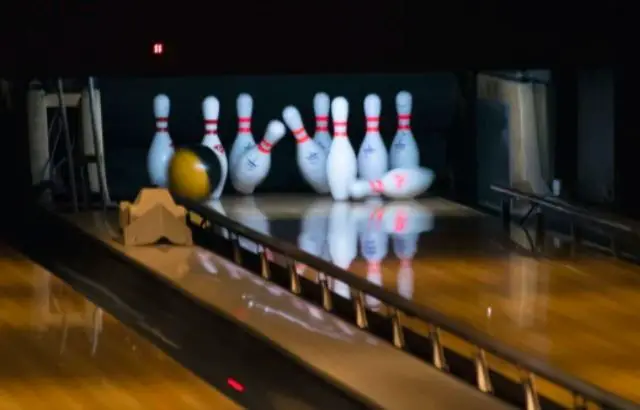
Is it Better to Play with a 13-pound Bowling Ball or a Heavier Ball?
Finally, it is time to take a look at the processing materials used to make the ball. One aspect that influences both the cost of the product. The final effect it generates when hitting the ball it is something that happens with the 13 pound bowling ball too.
Among the most common materials used to make bowling balls today are different types of plastics. They are even of varying composition since nowadays pearls generally have an outer layer of urethane or polyester and are abundantly decorated, accompanied by an interior of different active resins or composed of particles. Depending on this interior, we can find other effects for the beads.
This generates different types of balls, such as reactive and auctions or spare parts. Reactive balls are those used for the first shot and generally take certain angles. That helps you to hit the bowling pack, which facilitates its decomposition. When it comes to aftermarket balls or spikes. They usually do not affect and tend to follow a straight line after the shot.
Balls in bowling alleys usually follow this approach. This is our recommendation unless your skill level and budget are sufficient to pay for two balls, even in the cheapest options.
Frequently Asked Questions
Is a 14-pound bowling ball too light?
The technology used in the design and manufacture of modern bowling balls allows a 14-pound ball to match the heaviest weights virtually. Of course, you can’t take physics out of the equation. A 15 or 16-pound ball will hit harder, but as the ball becomes lighter, you can throw it faster to compensate a little for the weight differences. Finally, a bowler should use the heaviest ball that he can comfortably lift, throw, and control.
How many pounds should my bowling ball be?
Generally, an adult male of medium strength will choose a 15-16 pound ball. And a female will choose a 10-12 pound ball. But, of course, some of us are taller or shorter or have above- or below-average strength. So, from that basic guideline, be sure to adjust it according to your height and strength. Try a 13-pound bowling ball.
What weight ball do most Pro Bowlers use?
According to most reports, about 70% of professional bowlers on men’s tours around the world throw a 15-pound bowling ball. A small portion of experienced bowlers uses 14-pound balls. But most of the rest of the field still throws the maximum 16-pound ball.
For professional women bowlers, the average weight of a bowling ball that is thrown is usually around 14 pounds. A few 13-pound balls and several 15-pound balls are used, but most professional bowlers tend to bowl 14 pounds.
What bowling ball hits hardest?
The cover of the Hammer Scandal/S bowling ball is impregnated with carbon fiber. This makes it the most durable aggressive bowling ball on the market today. It is also a gem when it comes to retaining energy across the lane. It spends very little on transporting it around the lane before it provides an undeniable explosive reaction.
Pros: The Semtex Hybrid CFI reactive cover combines otherworldly durability with one of the most angular reactions you can see.
The symmetrical core retains and transfers energy fantastically to a bowling ball with a strong background finish. Although it’s a very aggressive bowling ball, it doesn’t overreact to shot variations of oil patterns. It works perfectly on the tightrope of reactivity.
Disadvantages: High-speed bowlers will see their effectiveness muted by this ball. This is a much more aggressive bowling ball for low-speed bowlers. It can be a little clumsy in oil transition patterns.
How fast should you throw a 13 pound bowling ball?
The facts are the ideal speed of the bowling ball is about 17 miles per hour (mph). Measured at impact with the pins and about 21 mph when the ball is thrown into the lane, plus or minus one. Tolerance mph.
When throwing the ball faster than this speed range. The Pro Bowler is in danger of a less than optimal bowling transport. The same is true for a ball speed of less than 16 mph at impact with the pins. Therefore, it makes sense to try to match the relative ball speed ranges used by professionals to help produce positive results.
Is it better to bowl with a heavier ball?
Heavier balls usually maintain their course. Because it goes through the pins, which is right for bowling as well as heavier balls hit harder, which is a plus when it comes to improved pin action.
What are the odds of bowling a 300 game?
The odds of a bowling a perfect game is 11,500 to 1. And those odds have to go up even more when you try to do it under 90 seconds.
Last Words
In this article, I have gone through a lot of things and the main query which you ask “is a 13-pound bowling ball too light”. Hope now you understand and let us know via comment your thoughts.

Carl works as a charted account by day, and sports enthusiast and amateur fiction writer by the weekend. He was a multi-sport athlete in his school days and played Division 3 lacrosse in college. He is a gear freak and is always looking for an excuse to upgrade his sports equipment. When not working or playing, he likes to hike and explore the countryside. Carl is a certified basketball athlete by the Basketball Association of America and has participated National Basketball League in 2016. He played for Akron Goodyear Wingfoot’s.
Moreover, Carl is also a badminton expert and he is playing it since 2006 when he was at standard 8. He has won several badminton championships and one remarkable is the Yonex USA International 2015. Also, he is an expert in Bowling.
Carl is the Co-Founder & Editor-In-Chief of Indoor Games Zone. He shares his expertise on basketball, badminton, and bowling on our website to help people get the best tips and products they are searching for.
- Basketball
- Badminton
- Bowling

![Stiga XTR Pro Review | 1,559+ Global Ratings (In-Depth Guide) [year] Stiga XTR Pro Review](https://indoorgameszone.com/wp-content/uploads/2021/08/Stiga-XTR-Pro-Review-218x150.jpg)

